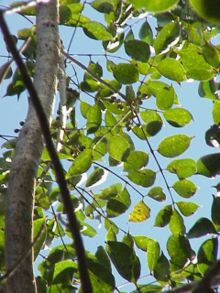AVAILABILITY OF NUTRIENTS IN FRUITS :-
VITAMINS:-
1. Vitamin A :- Mango> Papaya> Parsimon
2. Vitamin B1 (Thymin) :- Cashew Nut> Walnut> Almond> Pineapple
3. Vitamin B2 (Riboflavin) :- Bel> Papaya> Cashew Nut> Litchi
4. Vitamin C :- Barbados Cherry> Anwla> Guava> Lemon> Sweet Orange
CARBOHYDRATES:- Resin> Pineapple> Dates> Banana> Bel> Jamun
PROTIENS:- Cashew Nut(21.2%)> Almond(20.8%)> Walnut(15.6%)
FAT:- Walnut(64.5%)> Almond(58.9%)> Cashew Nut(46.9%)> Avocado(22.8%)
CARBONIC ACIDS:-
1. Citric Acid:- Berry> Citric Fruits> Guava> Pear
2. Malic Acid:- Apple> Banana> Cherry> Plum> Watermelon
3. Tartaric Acid:- Tamarind(Imli)> Grapes
MINERALS:-
1. Calcium:- Litchi> Karonda> Walnut
2. Iron:- Karonda> Dates> Walnut> Apple
3. Phosphorus:- Almonds> Cashew Nut> Walnut> Litchi
VITAMINS:-
1. Vitamin A :- Mango> Papaya> Parsimon
2. Vitamin B1 (Thymin) :- Cashew Nut> Walnut> Almond> Pineapple
3. Vitamin B2 (Riboflavin) :- Bel> Papaya> Cashew Nut> Litchi
4. Vitamin C :- Barbados Cherry> Anwla> Guava> Lemon> Sweet Orange
CARBOHYDRATES:- Resin> Pineapple> Dates> Banana> Bel> Jamun
PROTIENS:- Cashew Nut(21.2%)> Almond(20.8%)> Walnut(15.6%)
FAT:- Walnut(64.5%)> Almond(58.9%)> Cashew Nut(46.9%)> Avocado(22.8%)
CARBONIC ACIDS:-
1. Citric Acid:- Berry> Citric Fruits> Guava> Pear
2. Malic Acid:- Apple> Banana> Cherry> Plum> Watermelon
3. Tartaric Acid:- Tamarind(Imli)> Grapes
MINERALS:-
1. Calcium:- Litchi> Karonda> Walnut
2. Iron:- Karonda> Dates> Walnut> Apple
3. Phosphorus:- Almonds> Cashew Nut> Walnut> Litchi



